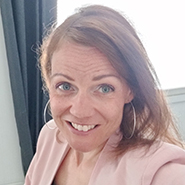Collaboration between the NGO and a university is the key to an impactful project
What happens if the funds are allocated to organizations that have only little or no contact with the target group?
Järjestötyö
The highly educated foreign-born population, here referred to as international talents, is a hot topic in Finland. Enticing skilled foreigners to come and stay is especially important because they offer innovation potential and internationalization opportunities. Moreover, Finland needs tens of thousands of new residents every year to ensure our labor force in the future (Pitkänen et al. 2023).
The relevant question is not only how to entice skilled people to move here but also how to find meaningful employment for all. This is important both at the individual level and to the national economy.
Projects improving integration
One of the top projects for international talents has been the Talent Boost Program, which aims to attract international talents to Finland and to improve awareness and recognition of Finland globally, as well as to utilize better the skills and expertise of those who already reside in Finland (Ministry of Economic Affairs and Employment of Finland 2023). Besides Talent Boost, other programs, e.g., AMIF and European Social Fund, have distributed millions of funding for integration in recent years.
Whence, the project world is a key player in the integration scene. Too many projects start with questions like, “Which problems are international talents facing in Finland?” and “What can we do to facilitate their entrance into the job market”, the results containing a myriad of complex and intertwined reasons, such as language barriers, recognition of foreign degrees, and the overall bias of Finnish employers towards immigrants, highly educated or not.
Why do traditional project organizations not ask NGOs to participate?
As one realizes, this is not a very efficient way of working. Why do traditional project organizations not ask NGOs to participate, instead? For example, DigiMESH (ESF 2022–2023, REACT-EU) has been an example of a successful approach where no money was invested in the research of the target audience but a place for an NGO was offered, instead. Thus, the project was able to immediately start tackling the problem with concrete tools and methods, like events, a guidebook, and a MOOC (massive open online course). The project arranged joint events and developed a MOOC in collaboration with two universities of applied sciences and the NGO International Working Women of Finland.
Challenges in the project field – especially from NGOs’ perspective
The project world isn’t very easy to access.
From an NGO’s point of view, one of the first obstacles to applying these funds is the bureaucracy: a complex application process, difficult reporting, and usually the money is given back (partially) after the project is completed or advanced. This scares away most of the associations that do not have the structure and resources to face such complexity.
The project world does not come without its problems.
A fundamental issue with project-based funding is the short lifespan. All projects bar Talent Boost are temporary, which makes it very difficult, especially for newcomers, to get to know them before it’s too late, as too often the activities stop together with the project funding. This problem is intrinsic to most fundings, which, instead of supporting existing, successful projects, always look for new ideas.
As project funding is limited, there is also competition among Finnish actors for money instead of cooperation.
It is not rare that similar projects are conducted in several locations, and the project organizations are maybe not even aware of each other. The project world can be confusing in its temporality, and usually not even the actors “inside” the system know all ongoing projects, let alone the immigrants. Instead, it would be more beneficial to have continuity: support and information in a familiar and well-known place.
Collaboration as everyone’s interest
Though there certainly are challenges in the NGOs’ way, the situation is far from hopeless. DigiMESH project has been one good example of good collaboration between large project actors and a smaller NGO. Together they have been able to bring target group knowledge, project expertise and resources to the same table.
Good examples lead the way for a more permanent way of acting. Collaboration and mutual goals always bring more effectiveness and success to the work. And, like integration, this is everyone’s concern.
Sources
European Commission (2017). Finland: Highly educated migrants’ challenges on the labour market. Retrieved 31.5.2023.
Ministry of Economic Affairs and Employment of Finland (2023). Talent Boost programme. Retrieved 31.5.2023.
Pitkänen, V., Välimäki, M. & Niemi, M. (2023). Foreign talents in Finland: working life, everyday life, and inclusion. International Talent Finland Research Project. E2 Research. Retrieved 31.5.2023.
Tämän lehden muut jutut
Yksi kaikkien ja kaikki yhden puolesta – vapaaehtoistoiminnalla on arvoa arvaamatonta
Vapaaehtoistyössä voi löytää oman paikkansa ja purkaa vastakkainasettelua
Tuettu vapaaehtoistoiminta avaa mahdollisuuksia yhteiselle oppimiselle
Vapaaehtoisten koulutuksen tavoitteet kirkkaaksi
Podcast: Mitä on globaalikasvatus?
Kansalaisjärjestön ja korkeakoulun välinen yhteistyö on avain vaikuttavaan hankkeeseen


